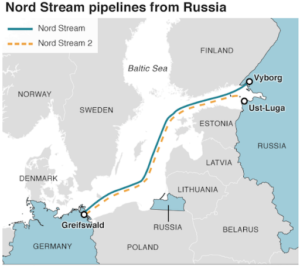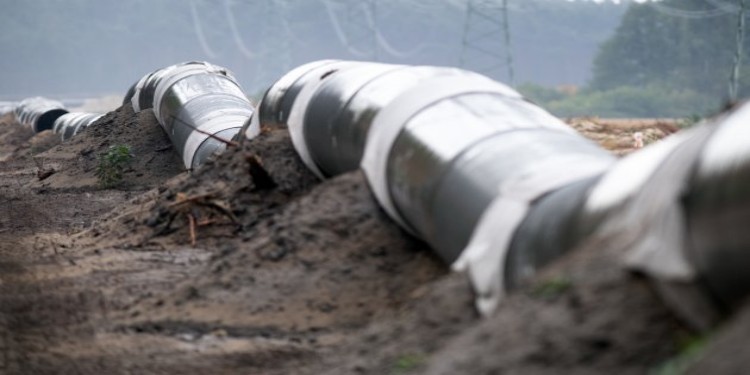In news- The Nord Stream 2 is being used as a bargaining chip by the West to force Russia to de-escalate tensions with Ukraine.
About Nord Stream 2 pipeline–
- The 1,200-km pipeline will run from Ust-Luga in Russia (Leningrad Region) to Greifswald in Germany through the Baltic Sea.
- The total capacity of two strings of Nord Stream 2 is 55 billion cubic meters of gas per year.
- It is implemented by the Nord Stream 2 AG project company.
- In 2015, Gazprom and 5 other European energy firms decided to build Nord Stream 2, valued at around $11 billion.
- It will run along the already-completed Nord Stream 1 system, making the aggregate design capacity of Nord Stream and Nord Stream 2, 110 billion cubic meters of gas per year.
- This project is designed to double the amount of natural gas flowing from Russia straight to Germany.
- Work on the pipeline finished in September 2021.
- But Gazprom is still awaiting approval from European regulators before it can open the taps and start pumping gas.

- Critics say the pipeline is a tool of Russian foreign policy – and there has been strong opposition from the US, Ukraine and Poland.
- The US fears the pipeline makes Europe much more dependent on Russian energy, handing significant power over Berlin and the EU to the Russian President.
Nord Stream 1-
- Nord Stream, the longest subsea pipeline, is an export gas pipeline which runs under the Baltic Sea carrying gas from Russia to Europe.
- The gas for Nord Steam comes mainly from the Bovanenkovo oil and gas condensate deposit in Western Siberia.
- It was completed in 2011 and runs from Vyborg in Leningrad to Lubmin near Greifswald, Germany.
- The pipeline’s significance comes from the fact that it bypasses transit countries, making it highly reliable for European customers.
- It crosses the Exclusive Economic Zones (EEZs) of several countries including Russia, Finland, Sweden, Denmark and Germany, and the territorial waters of Russia, Denmark, and Germany.
- In Germany, the pipeline connects to the OPAL (Baltic Sea Pipeline) and NEL (North European Pipeline) which further connects to the European grid.
Source: The Hindu














